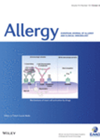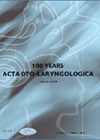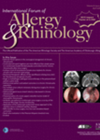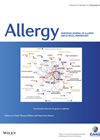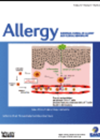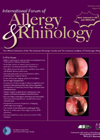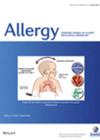
Journal Reviews
Chronic rhinosinusitis, are we treating the same disease?
Chronic rhinosinusitis (CRS) is a heterogenic disease. The effects of heterogeneity on treatment outcome are not very clear. Authors used clinical features such as endoscopic findings scores and full blood count findings in addition to analysis of 35 molecular markers....
Balloon compared to FESS – long-term patient satisfaction
Balloon compared to FESS – long-term patient satisfaction This paper is the first controlled study of balloon sinoplasty’s long-term efficacy, with a follow-up extending over five years. There were 208 patients analysed and 88 recruited. Exclusions were nasal polyps grade...
Method of delivery: all topical nasal corticosteroids are not made equal
There is an increasing body of evidence that the role of surgery for chronic rhinosinusitis is to facilitate the delivery of topical medical treatment – most notably, topical corticosteroids. Two recent studies, one using flow dynamics and another one examining...
Stem cells in nasal polyposis
Chronic rhinosinusitis with nasal polyps (CRSwNP) is common and is multifactorial with increased T-helper 2 response and active role of interleukin 5. It can be associated with asthma and control of CRSwNP improves lower airway disease. Due to constant cellular...
Sinus surgery effects on asthma patients
Chronic rhinosinusitis (CRS) and asthma are related. The authors identified a gap in the literature and designed this study with a relatively large sample size of 86 patients. They included patients with comorbid asthma and CRS with or without polyps...
The effect of cocaine or adrenaline dressing during endoscopic sinus surgery
A randomised controlled study of 37 patients took place that underwent endoscopic sinus surgery for chronic rhinosinusitis and received adrenaline or cocaine-soaked patties. The study showed no difference in the mean surgical field scores between adrenaline and cocaine sides. Adequate...
Comparing patient and surgeon concerns in sinus surgery
This prospective observational study had a total of 180 patients undergoing endoscopic sinus surgery for chronic rhinosinusitis with or without polyposis. Data was analysed using descriptive statistics and analysis of variance. Subjects felt the greatest level of concern regarding potential...
Is there a cause-and-effect relationship between allergic rhinitis and chronic rhinosinusitis?
This review examines the possible causative relationship between allergic rhinitis (AR) and chronic rhinosinusitis (CRS) that has long been proposed. Many observational and experimental studies exist, however no clear and definitive connection has been established. This is mainly due to...

